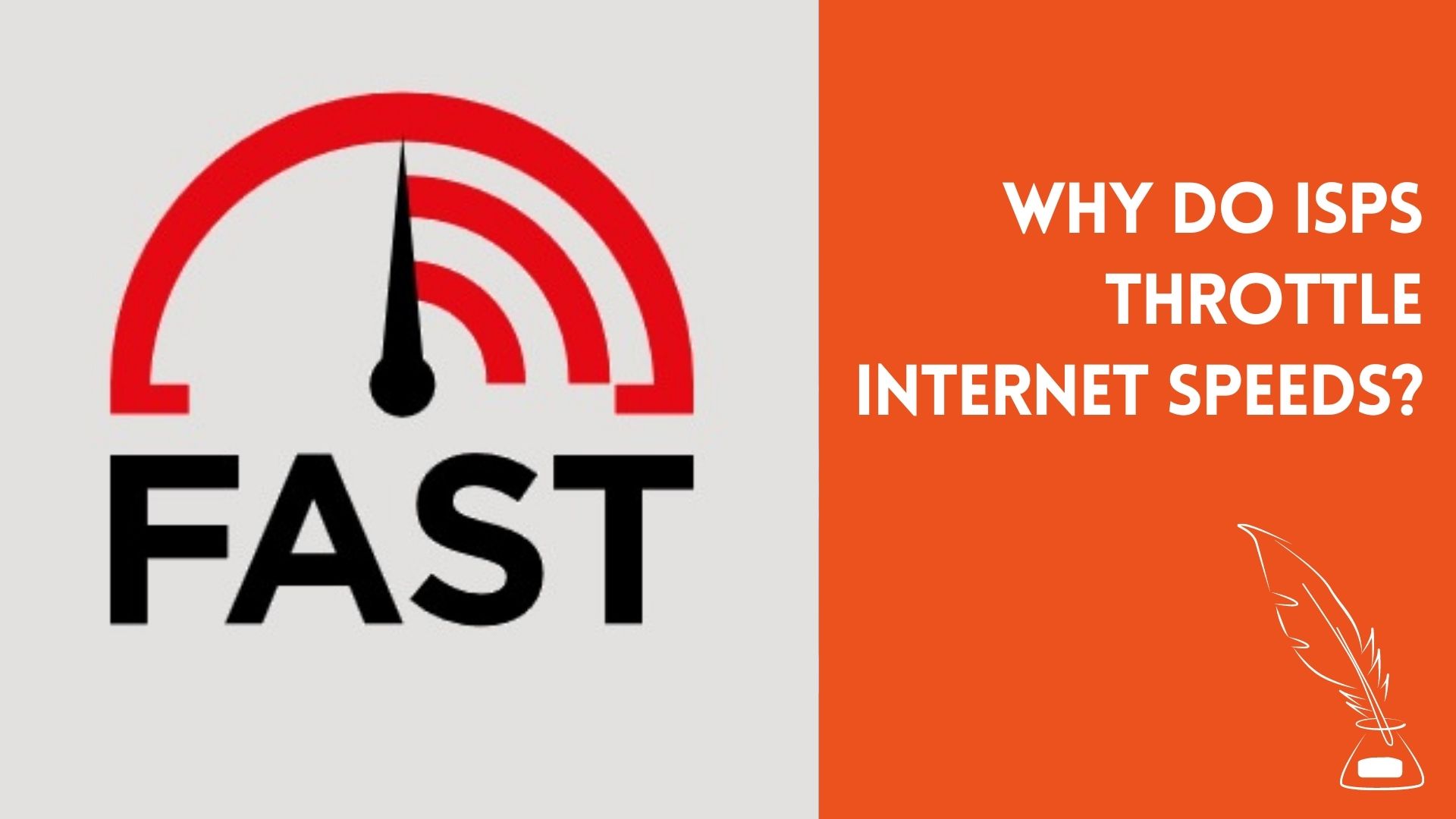Internet connectivity is in constant demand, these days. To meet such a monumental demand, internet service providers are doing their best to offer internet access across rural and urban America. For instance, Cox is delivering high network speeds to its customers at incredibly affordable Cox internet prices, while other ISPs are rolling out special plans for the low-income group to make internet connectivity common nationwide, instead of a luxury that’s limited to a few.
Even though high-speed internet may be available from East Coast to West Coast, yet consumers aren’t guaranteed consistent speeds from every provider. Internet outages, overloaded networks, and speed slowdowns still rule the day. What’s more, certain internet providers deliberately reduce the speed of data transmission on a network and cut off bandwidth allotted to a certain subscriber. This is known as “ISP throttling.” Why do ISPs throttle internet speeds? Let’s figure it out below.
Why Does ISP Throttling Happen?
Here are the top reasons why your internet service provider may throttle your bandwidth:
Peak Traffic Time
Bandwidth is a finite resource. In a cable internet system, especially, where bandwidth is “shared” between houses in a neighborhood, ISPs may intentionally slow down signal transmission from the back-end to ensure an equal distribution of data and prevent any single home from over-using the allocated bandwidth at the expense of other subscribers. Similarly, when too many devices demand internet access at the same time, the large volume of requests can overload the network and create congestion, which is a tough knot to untangle.
So, your ISP may restrict bandwidth during peak time or rush hours in order to regulate the traffic on the network and save it from straining under pressure.
Breached Data Cap
Data caps are the monthly restrictions on the amount of internet data that you can use on your web-connected devices. Mobile or wireless internet providers usually enforce data limitations on their cellular plans, along with a handful of cable, DSL, and satellite internet companies. If a user exceeds the data cap before the end of the month, the ISP slows down their connection and restrain their data, instead of completely cutting off their bandwidth. So, you may experience bandwidth throttling if you have gone above and beyond your monthly data allowance.
Paid Prioritization
ISPs may throttle data for specific types of websites or online activities to discourage you from accessing them. This may include torrent websites or FTP file sharing. Moreover, due to the repeal of net neutrality laws, ISPs may also reduce bandwidth for certain kinds of online content or services in order to drive you towards those that are affiliated with the ISP or to force those services to pay extra to the ISP for faster loading times. This is called paid prioritization, whereby ISPs openly favor or devalue website access for their own gains.
What are the Tell-Tale Signs of a Throttled Connection?
Here are a few ways you can recognize ISP throttling from a mile away:
Choppy Download Speeds – When your download speed drops in and out and your Wi-Fi becomes spottier than usual, then this is the first sign of ISP throttling, which targets the speed and stability of an internet connection.
Buffering Online Videos – When the loading wheel revolves endlessly and streaming a video takes too much time where before it was seamless and fast, then know that your connection is being throttled from the source.
Non-Functional Websites – When certain websites don’t load at all and show errors, while others are working fine on the web browser, then chances are that your ISP may be throttling your data and blocking data-intensive websites.
How Can You Check ISP Throttling on Your Network?
If you’re worried about the status of your network, then the following tests will help you know for sure whether your connection is being throttled by your ISP or not:
Scan Your Internet Bill
While ISPs advertise their internet speeds and cheaper price tags in the most prominent way possible, they surreptitiously mention data caps in the fine print, which is often ignored by customers. So, when the throttling hits a network, such users are left feeling bewildered. Therefore, thoroughly examine the features of an internet service before signing up. To check ISP throttling on your network, scan your internet invoice for data caps or open your user account online to inspect the internet plan you’ve subscribed to, and see if any data caps are mentioned there.
Take an Internet Speed Test
An internet speed test evaluates your internet connection performance and gives you real-time stats about its speed and stability. You can find several speed test tools online for this purpose. To confirm ISP throttling on your network, disable Wi-Fi on all devices, connect your computer to the router directly via Ethernet, open the test and run it. Wait for several minutes until the results appear on your screen. Now, if your download and upload speed show up to be significantly lower than what you normally get and what you’re paying for in your package, and you can’t explain the slowdown otherwise, then chances are that your network is being throttled.
Double-Check with a VPN
A VPN or Virtual Private Network is a program that encrypts your internet data and hides it from third parties and even your internet service provider. With a VPN-enabled connection, you can surf anonymously on the web and disguise your online identity. No one will be able to track your activities let alone steal your information. So, get a VPN and switch it on. Run a speed test again with the VPN activated on your internet device. If the results are drastically different from the regular speed test, and your speeds are showing signs of improvement, then your ISP may be throttling your data.
What Can You Do About It?
Regulate Bandwidth Usage – To avoid hitting your data cap every month, dial down your bandwidth consumption. Avoid data-intensive activities online, especially near the end of the monthly cycle, and keep your data usage under control.
Upgrade Your Internet Plan – More often than not, users with lower speed tiers bear the worst brunt of ISP throttling. So, upgrade your internet plan to an unlimited tier. If your ISP restricts data even on that, then, switch to a new provider with a better reputation among customers.
Get a VPN – A VPN bypasses ISP throttling and unlocks websites, which are restricted by an ISP due to paid prioritization. So, subscribe to a credible VPN with transparent policies to sidestep content-based throttling.
Also Read: Thd Co Home Depot Health Check for Employee
Wrapping Up
ISP throttling ruins the internet experience for a user. Yet, there may be sound reasons behind it, as are covered in this post. You should check ISP throttling on your network if you haven’t already. Apply the aforementioned tips to avert it successfully and surf the web without a hitch.





